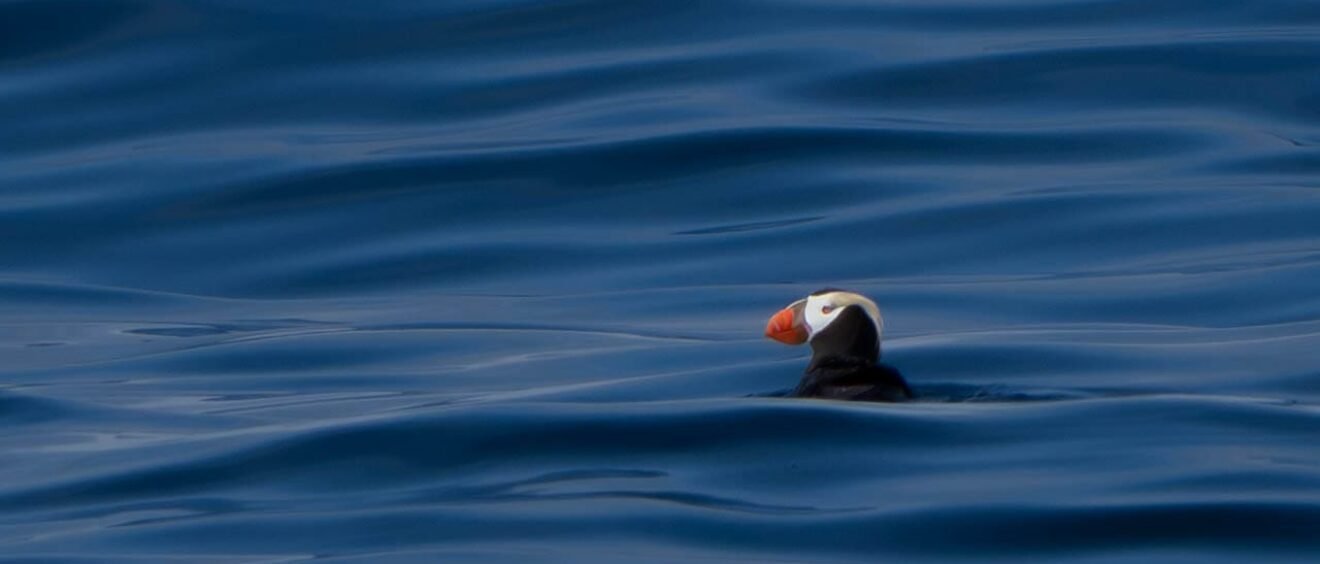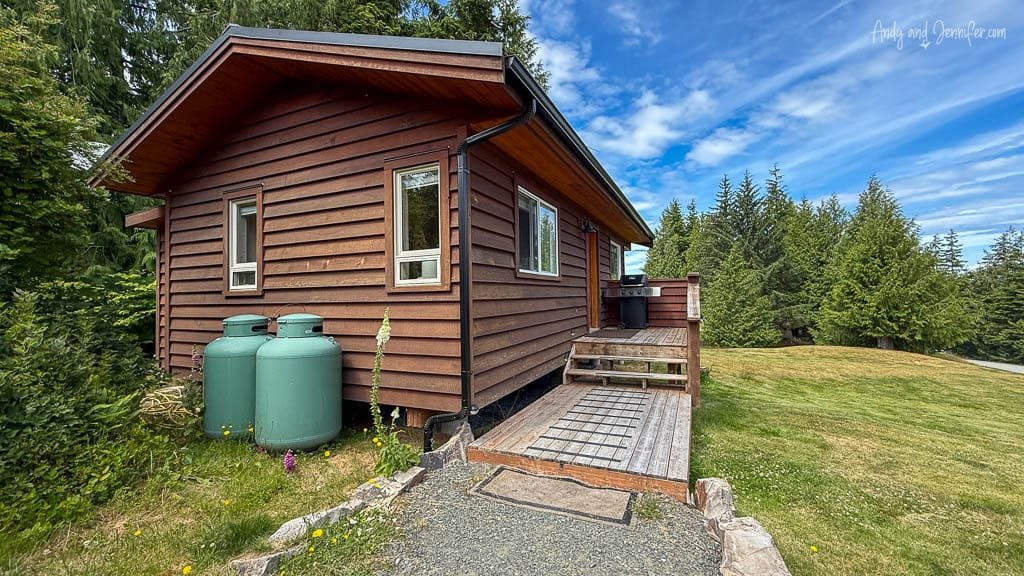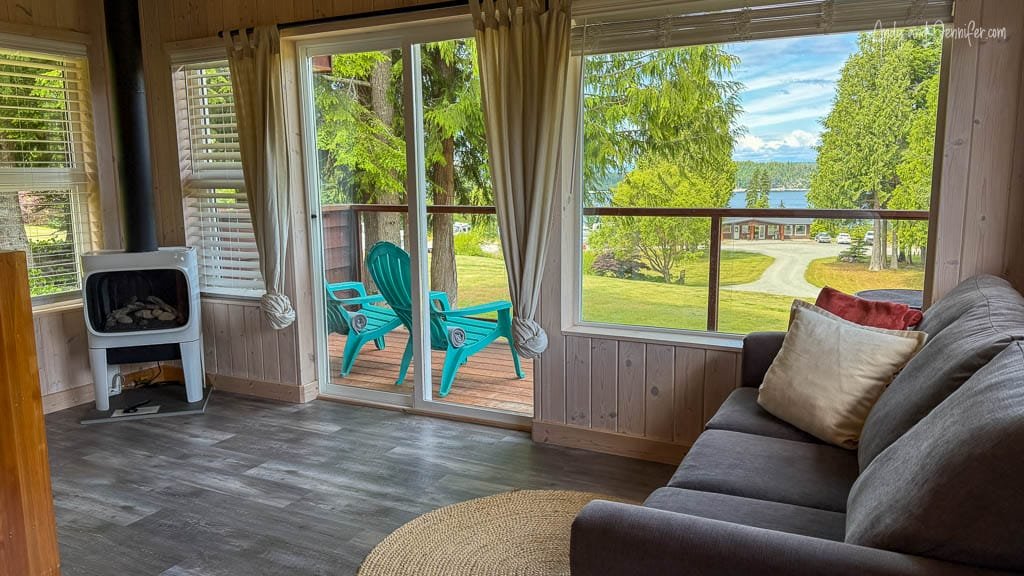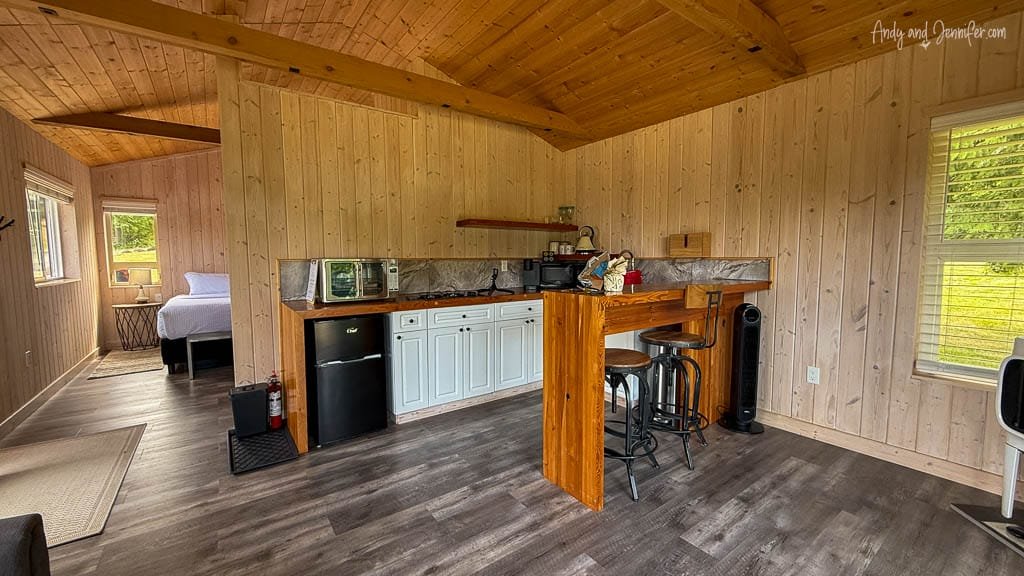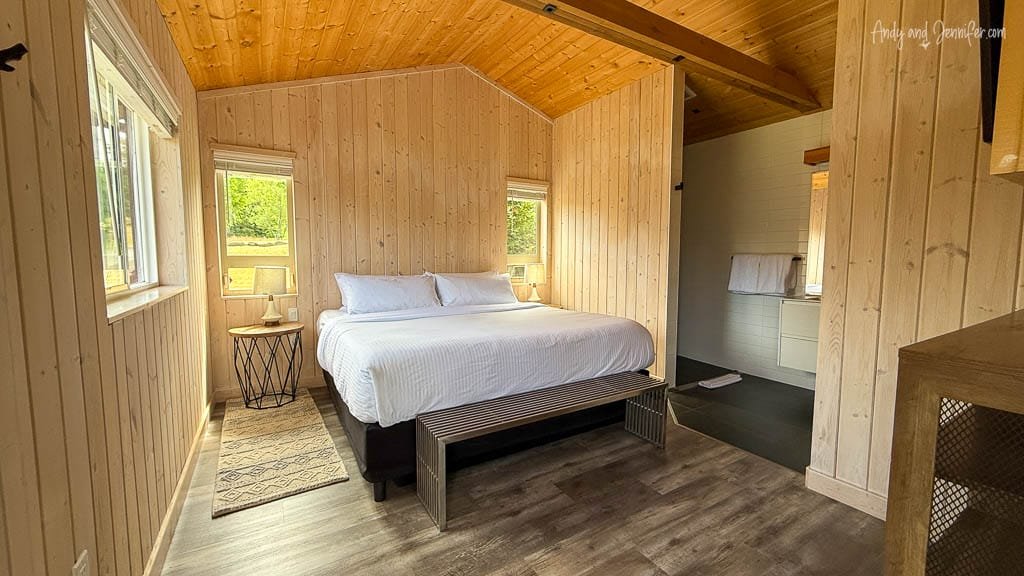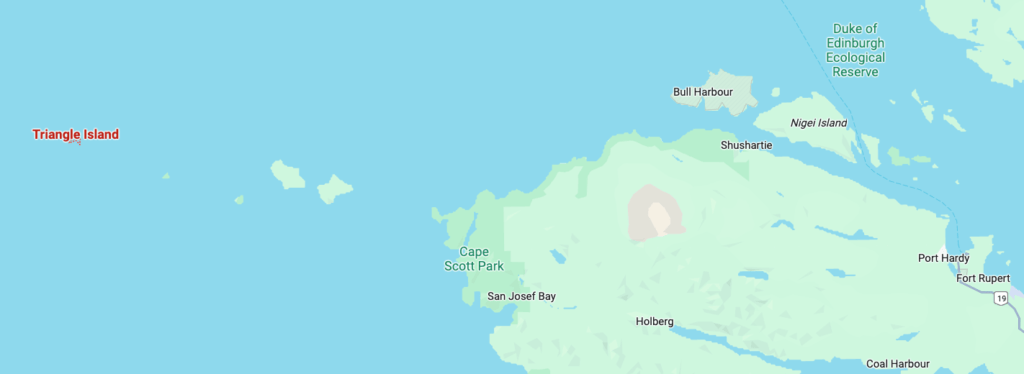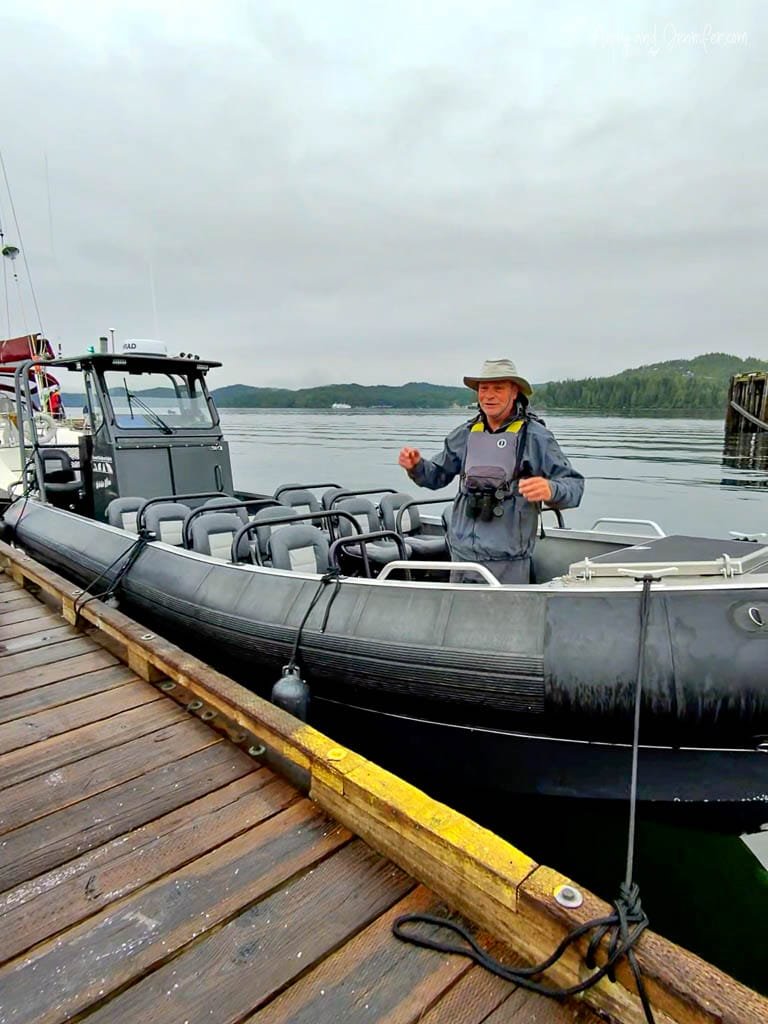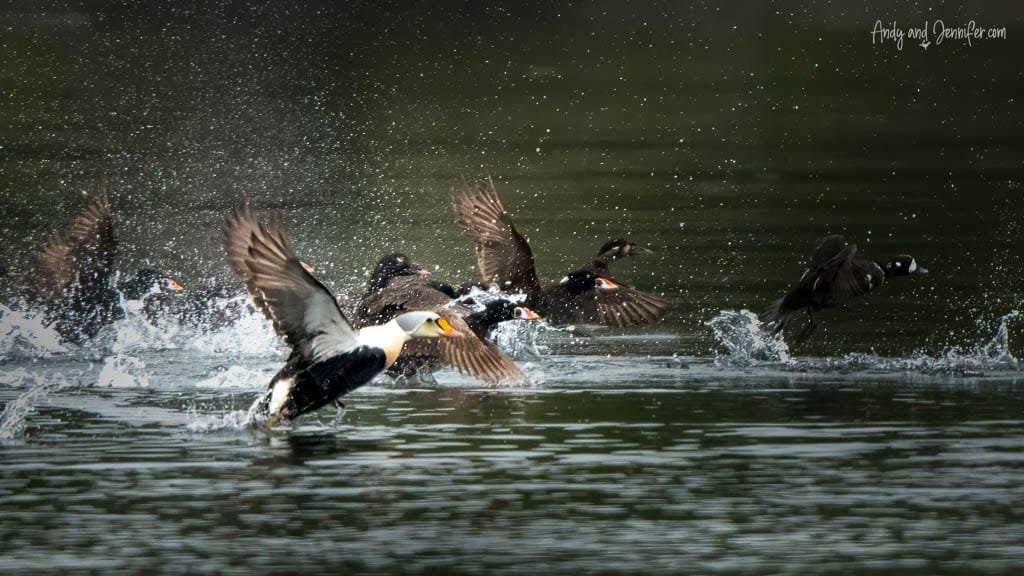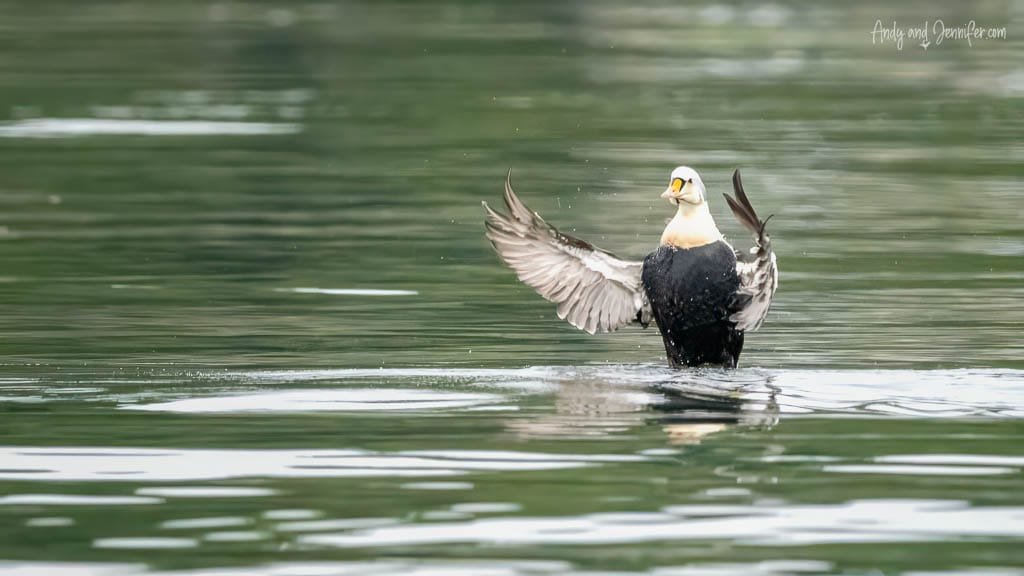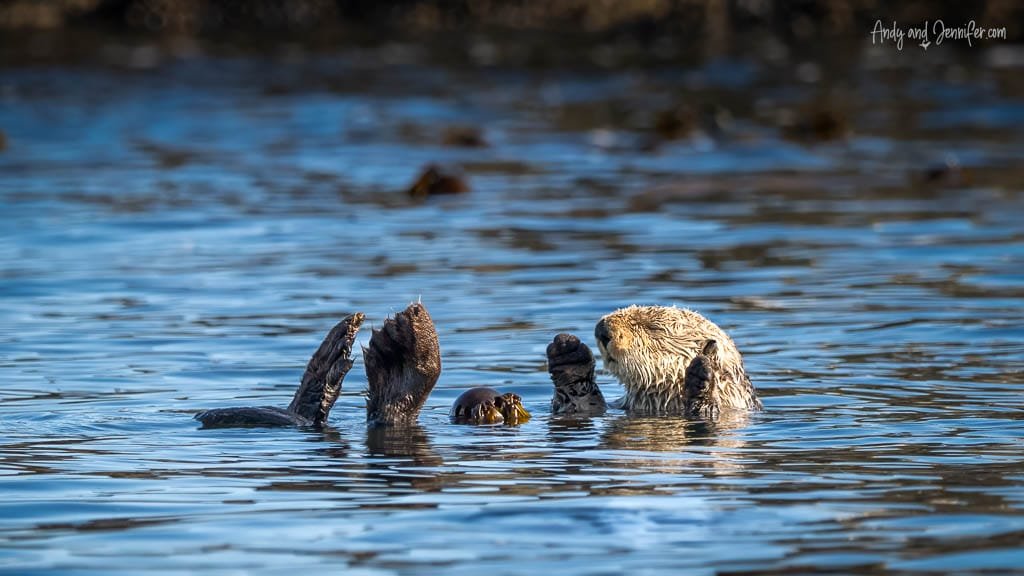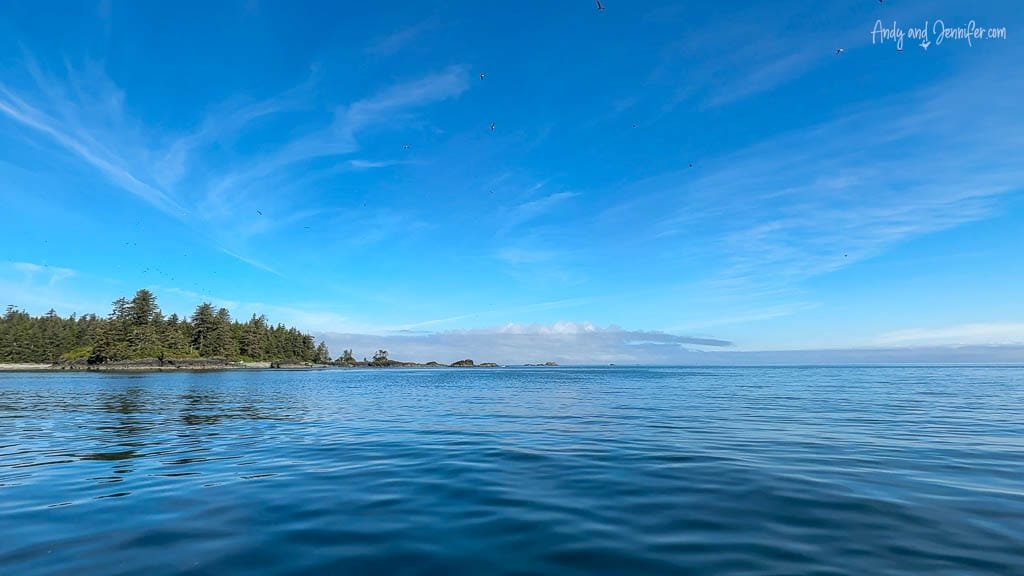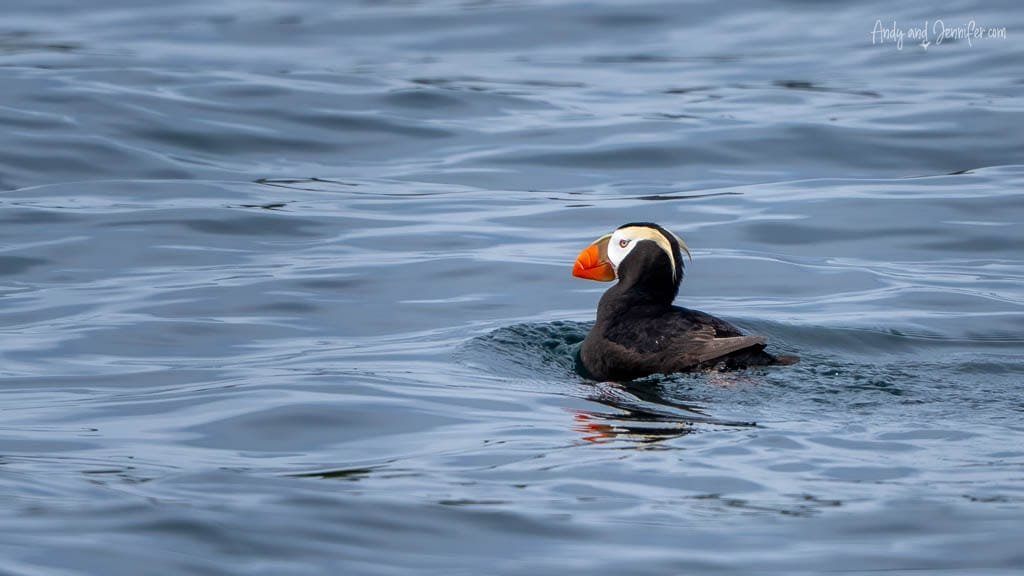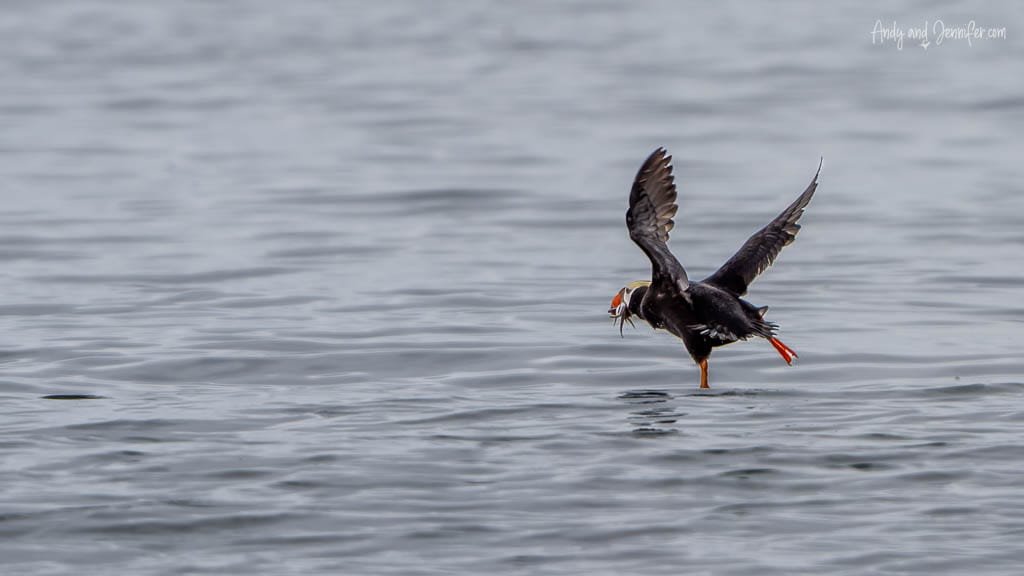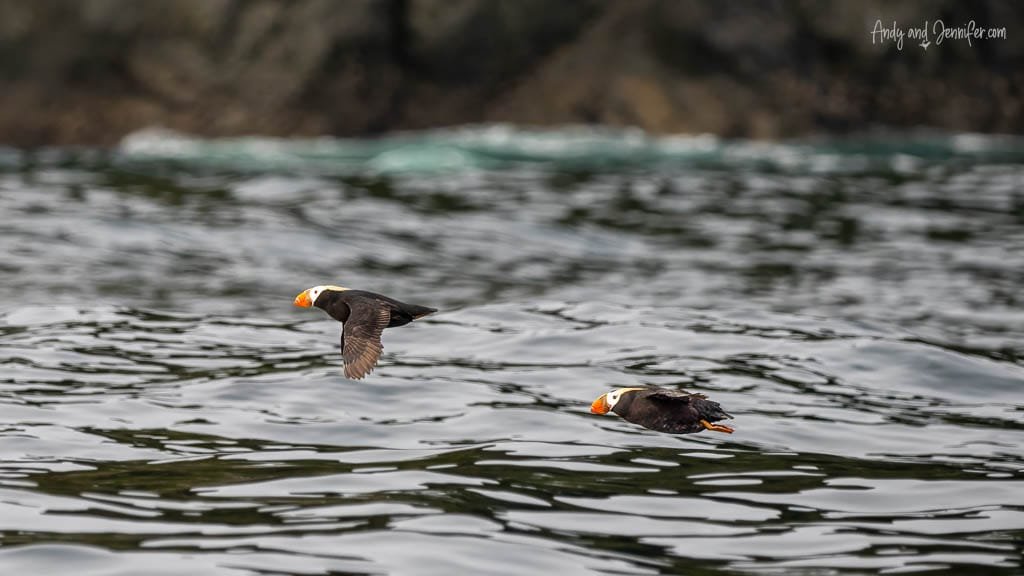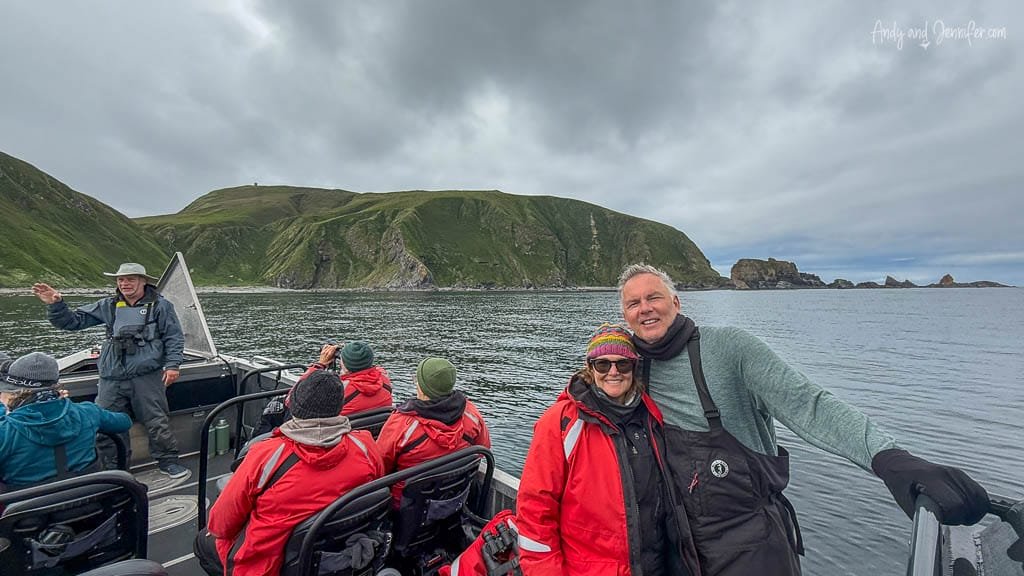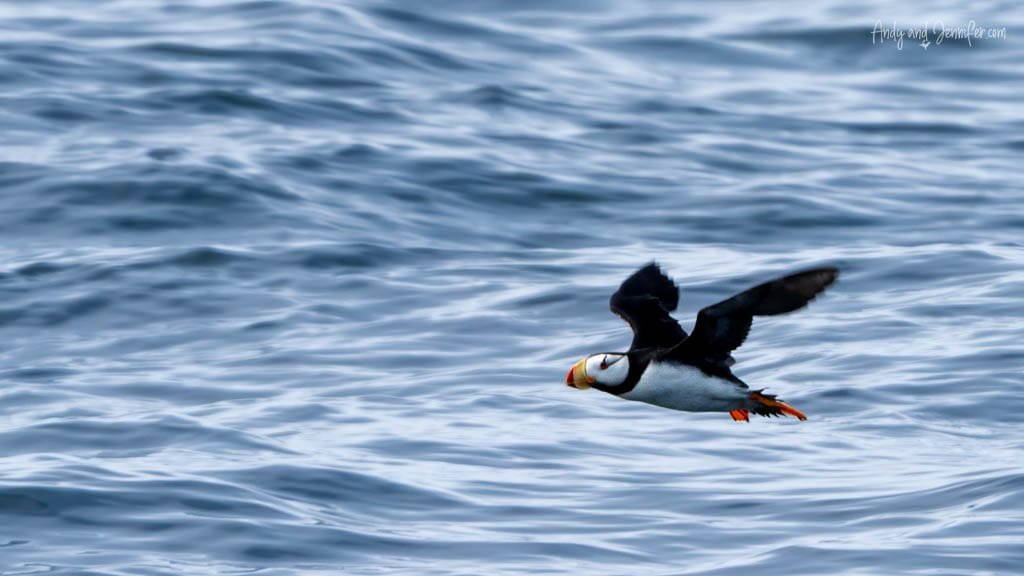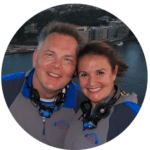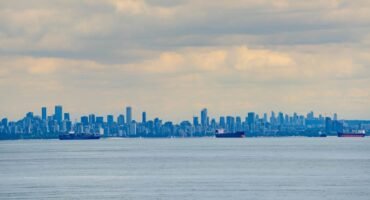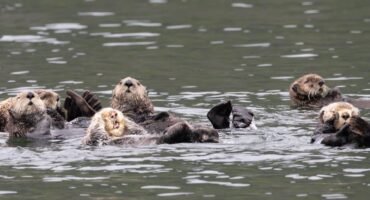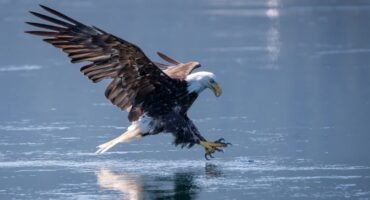(This post is part of our wildlife photography expedition to Canada – links to other parts of the trip will be added once we finish them)
Driving from Nanaimo to Port McNeill on Vancouver Island
After an in-room coffee courtesy of the Yeti, we set off around 9 a.m. for Port McNeill, on the far north of Vancouver Island. At just over four hours, it was one of the longest drives of our trip. It might have made more sense to stop in Campbell River first, but our timing had to align with the Campbell River eagle show later in the month and the monthly birding trip to Triangle Island from Port Hardy. The route makes no sense on paper, but there was a reason behind it.
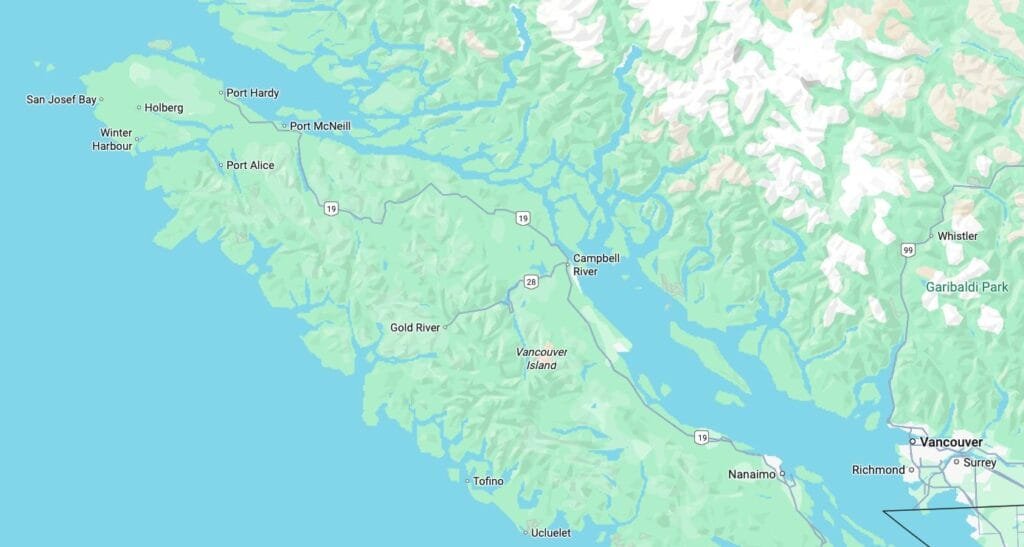
Not long into the morning, an email from Coastal Rainforest Safaris landed in my inbox. Weather for Triangle Island was not looking good. The seas are exposed and rough, and the swell would have made it a miserable ride. They pushed the tour back by a day, with the option of a refund if it did not work. Thankfully our itinerary had a buffer, and I was relieved they put guest comfort ahead of a rigid “rain or shine” policy.
Stopping at Goats on the Roof in Coombs, BC
Before continuing north we made a short detour to Coombs, about 15 minutes off the main highway. We had seen this place on YouTube while planning the trip: goats grazing on the grass roof of the Old Country Market. Turns out it was no hidden gem. Half of Vancouver Island seemed to be there.
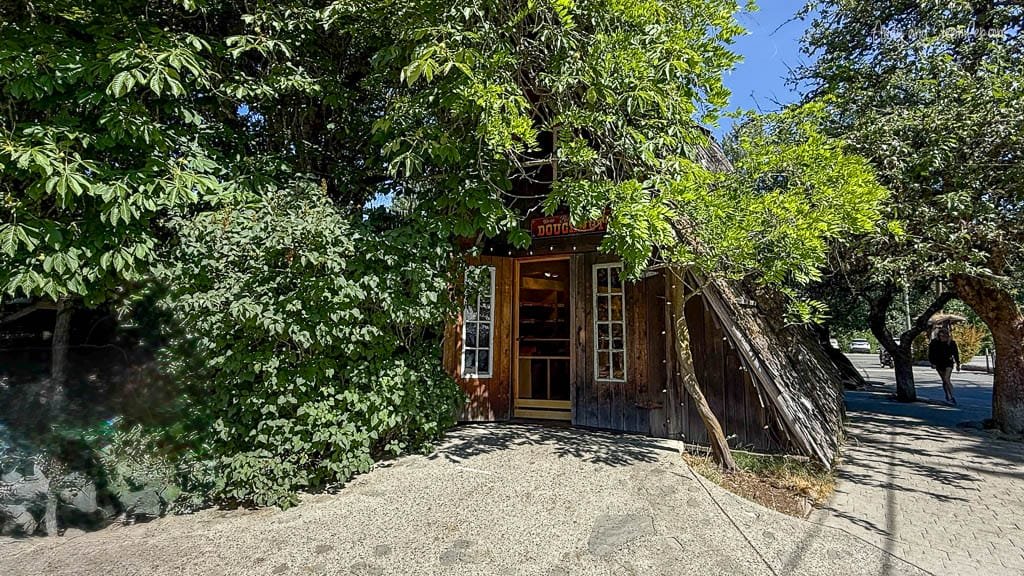
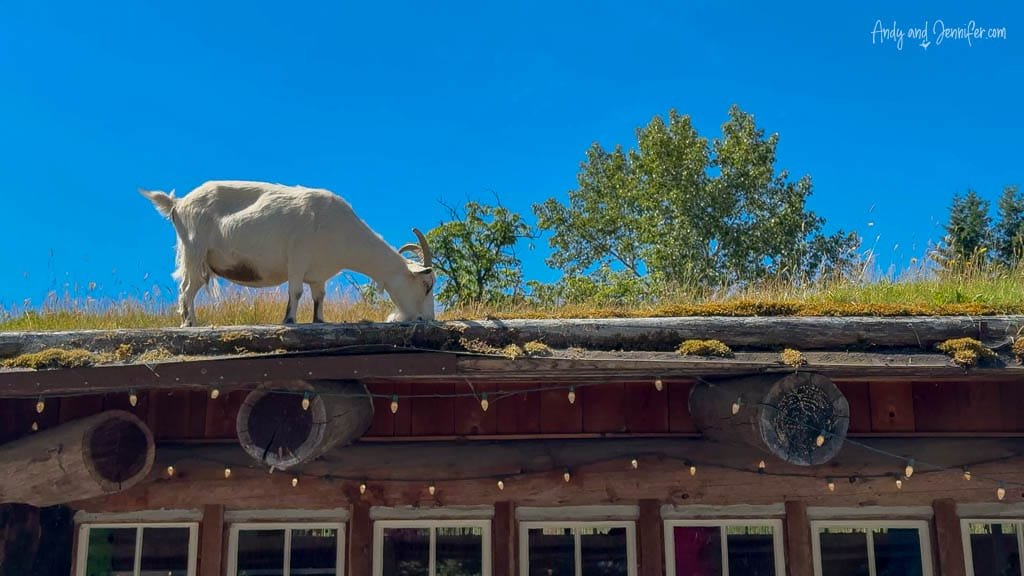
We managed to find a parking spot out front and joined the queue at the doughnut shop. Definitely worth it. The standout was the “Ukee Magic” — essentially an old-fashioned sour cream doughnut glazed with honey, drizzled with caramel, and sprinkled with sea salt. All I could think of was
Wilford Brimley’s “diabeetus” commercials from the 1980s. So good. We didn’t know it at the time but “Ukee” is a local nickname for Ucluelet (pronounced “you-clue-let”), which is a small town on the West coast of the island.
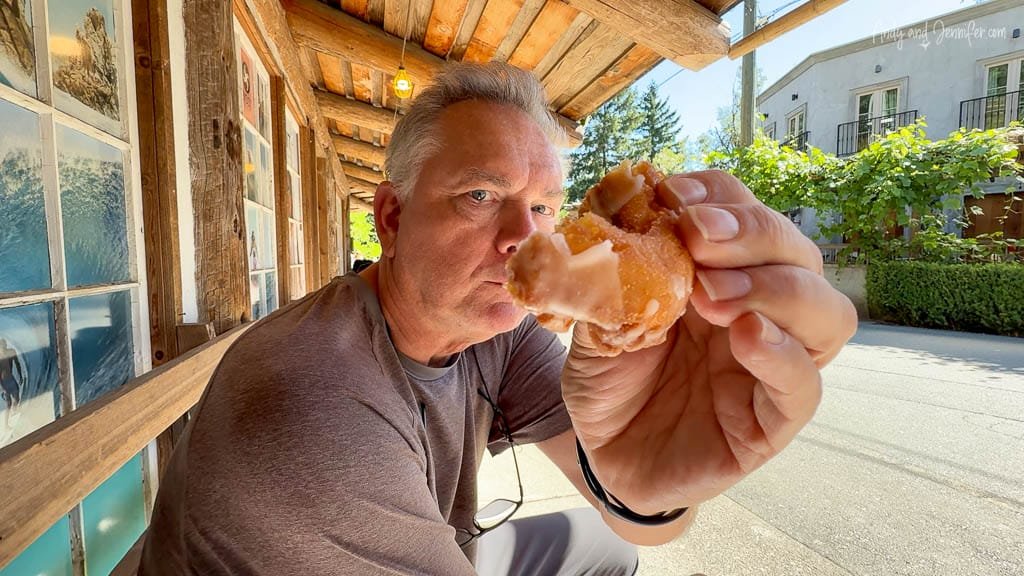
We grabbed some local cherries from the fruit stand and wandered through the market. Plenty of pottery and crafts tempted us, but we stuck to a pack of thick-cut (not Canadian-type) bacon since our next few nights included a cabin with a kitchen.
The rest of the drive north was gorgeous. Elk warning signs lined the road, and sure enough we saw a few grazing near the verge. Even better, a black bear ambled along the roadside which was equal parts thrilling and terrifying.
Staying in a Cabin in Port McNeill
Port McNeill is about 30 minutes from Port Hardy, and we had three main activities planned during our stay: a day trip to Triangle Island from Port Hardy, a wildlife photography excursion from Port McNeill, and finally the ferry to Prince Rupert, also from Port Hardy. When we started searching for accommodation, the options were limited. A few motels had availability, but none looked especially appealing, and since we prefer to have a kitchen, we ended up booking a cabin in a caravan park instead. It had great reviews, but turning off onto a 2km deserted gravel road raised doubts. Any concerns vanished when we arrived. Deer wandered across the property, and our cabin was perfect: a separate bedroom, lounge, and a fully stocked kitchen. Quiet, clean, and comfortable. Exactly what we needed.
Coastal Rainforest Safaris to Triangle Island
After our rainy rest day we drove 30 minutes north to Port Hardy for the much-anticipated Triangle Island trip. Triangle Island is located 45 km off the northwestern tip of Vancouver Island (Cape Scott) and is home to British Columbia’s largest colony of tufted puffins. Access is extremely limited. Coastal Rainforest Safaris is the only operator that goes there, and only a handful of trips run each year.
It was an early start. At 7 a.m. we suited up in two-piece Mustang survival gear. The jacket was super bulky because it featured a built in flotation system. I felt like a red version of the Michelin-man. They also provided wool toques (beanies) and goggles. I had scoffed at the goggles at first, but was glad I took them as they turned out to be invaluable in the wind.
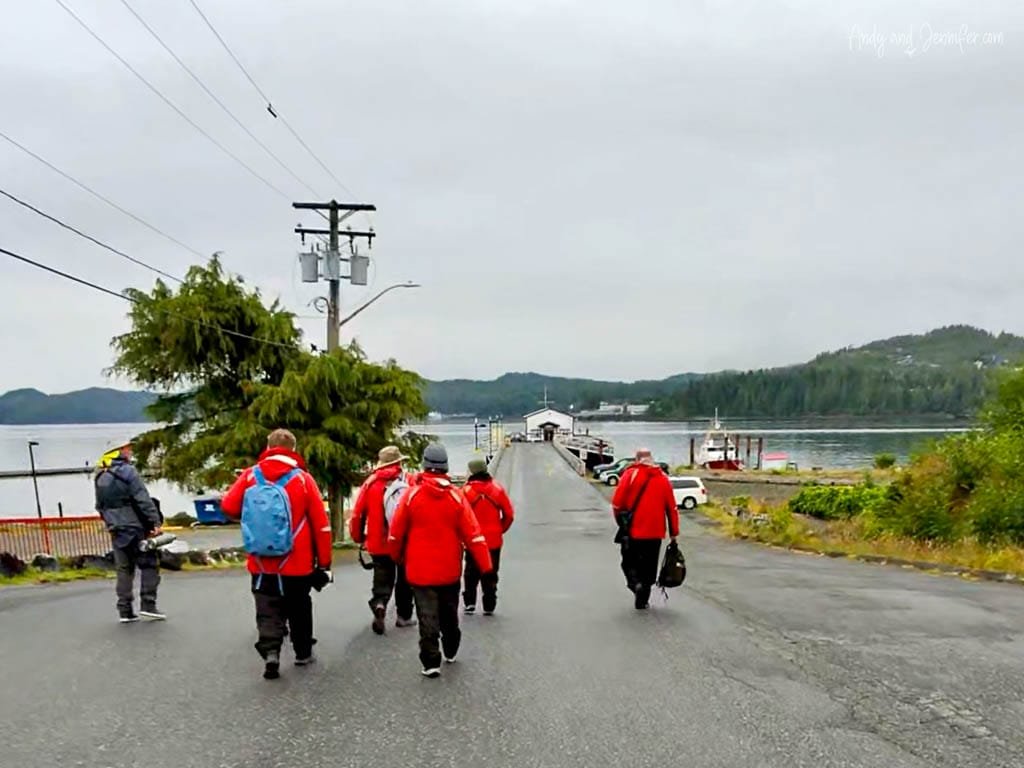
The zodiac was well designed, with an aisle down the centre and two benches on either side. Andy and I sat on opposite sides to avoid duplicate shots, and I stayed near the back to reduce the risk of seasickness.
Puffins, Auklets, and a Surprise Horned Puffin
The crossing was expected to take three hours, with a few short stops along the way. The first highlight was a rare king eider, sending the birders into a frenzy. We had seen them in Svalbard, so it was not a lifer for us, but fun nonetheless. I didn’t even know what a lifer was until this trip (and if you don’t know either, “lifer” is a
birding term and refers to the first time you’ve ever seen a particular bird species in your life).
The boat paused for a few playful sea otters, but as this was a birding trip, we didn’t stay with them too long.
The sea conditions were pristine.
The swell did pick up as soon as we were in the open water, but when we finally reached Triangle Island, the colony delivered. Tufted puffins filled the cliffs and skies. Photographing them from a moving zodiac in rolling seas was a challenge, but we managed a few keepers.
Rhinoceros auklets, known as the “poor man’s puffin” because they are less flashy and easier to spot, were everywhere. I could not spot their tiny “horn” in the field, but it appeared clearly when reviewing images later.
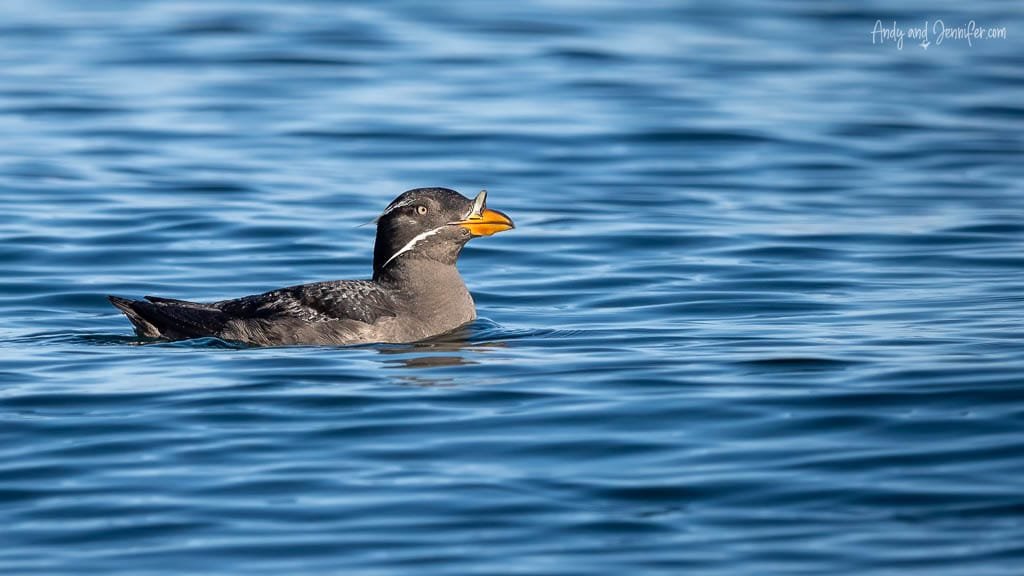
Though the sea was unusually calm, the boat still rocked noticeably when the motor was cut and we paused to watch the birds. The tour description had been upfront: “If you are prone to motion sickness, this is not the tour for you.” I had taken a tablet beforehand just in case, but even so I started to feel a little woozy, or perhaps I was just drowsy from the medication.
We carried on to Sartine Island, where we caught sight of a horned puffin. The photos are not sharp, but two puffin species in one day (or three, depending on how you count) felt like a win. And three “lifers” for us.
Albatross, Whales, and an Unplanned Feast for the Fish
At one point the captain asked if we were happy to stay out a little later than planned. Everyone agreed without hesitation. Offshore we found a fishing vessel surrounded by black-footed albatross and fulmars. The fisherman were blasting “walking on broken glass” by Annie Lennox, but the real show was humpbacks, orca, and even a minke whale appearing in succession.
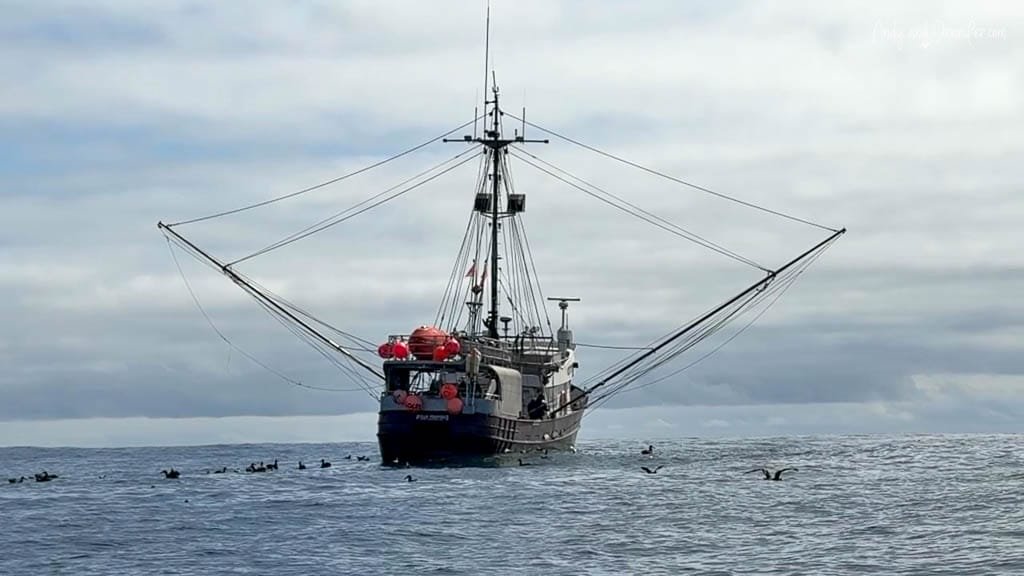
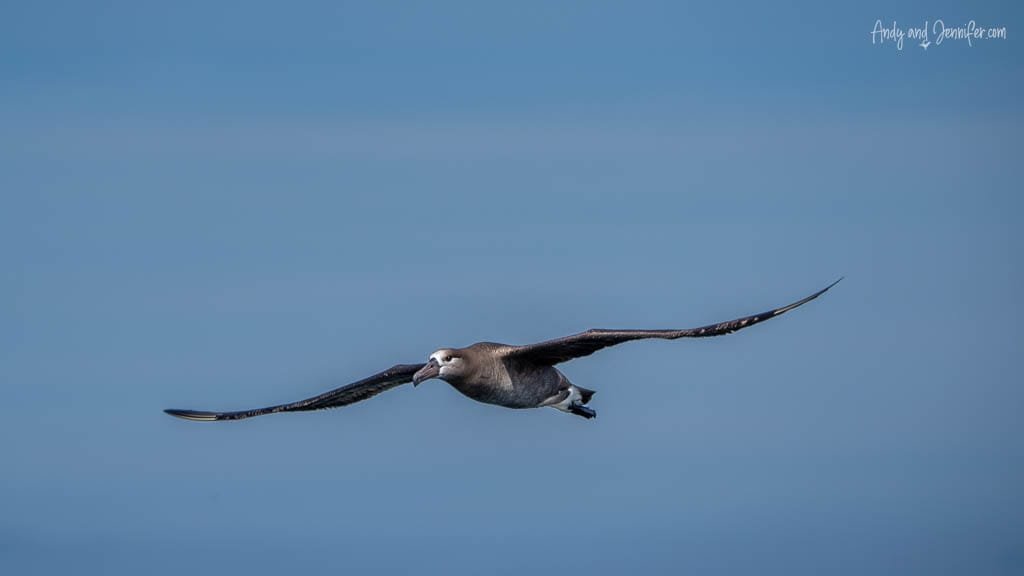
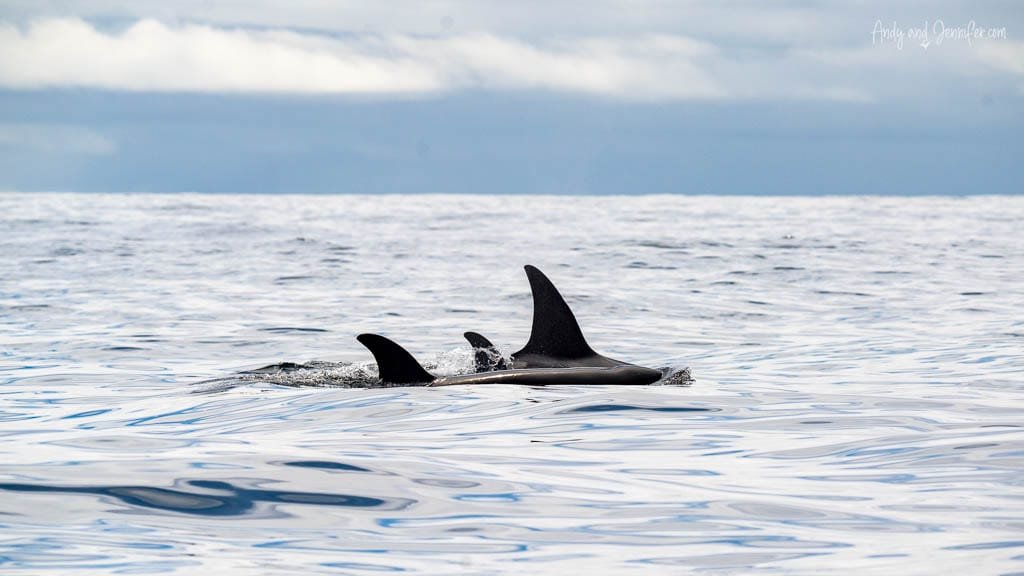
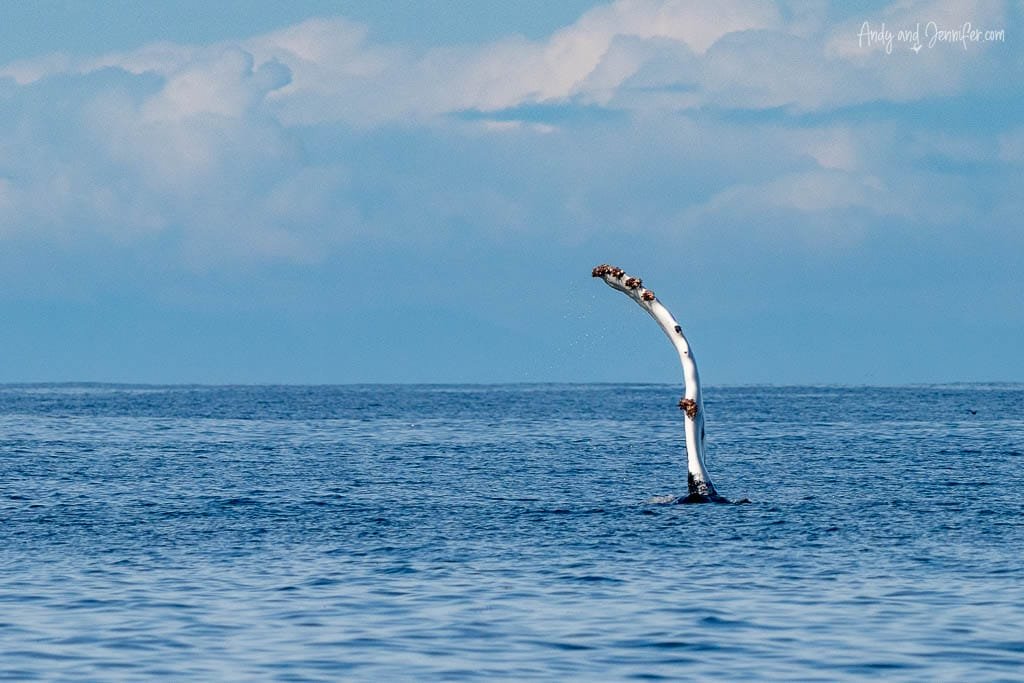
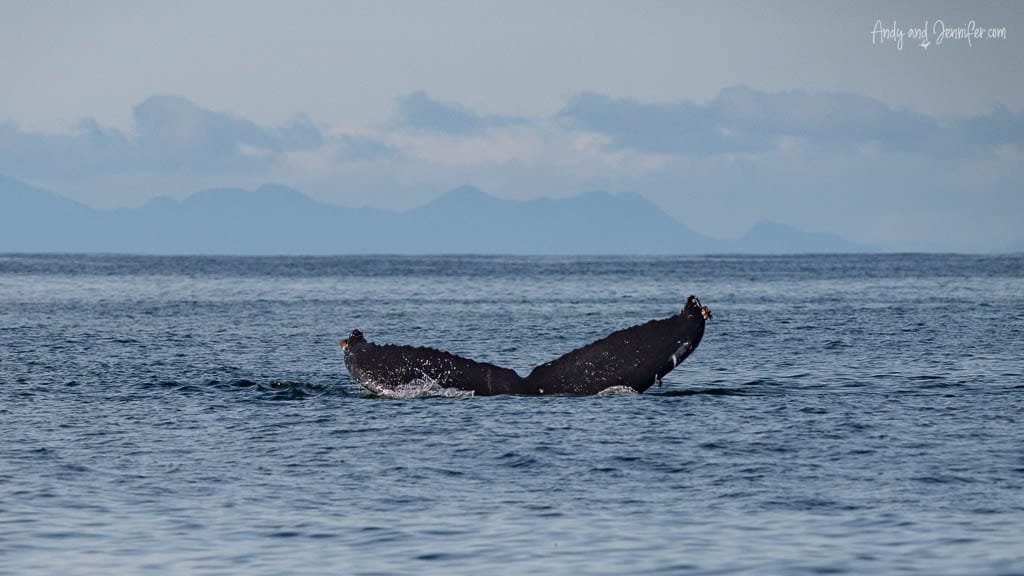
The swell eventually got the better of me. Despite taking Dramamine, I ended up feeding the fish over the back of the boat. I was thankful the rest of the boat was focussed on the whales so they missed my stealthy hork.
We finally turned back, not realising how far offshore we had travelled. By the time we returned to Port Hardy it was almost 7 p.m. A long day, a touch of windburn, but absolutely worth it. We would do it again in a heartbeat.
Next Stop: Wildlife Photography with Anthony Bucci
In one day, Port Hardy had delivered two (or three?) types of puffins, albatross, otters, and three species of whales. The only problem was that now I wanted to see the last remaining puffin species, the Atlantic puffin. Next up was a day on the water with Anthony Bucci Photography Tours, where we hoped to focus on otters and whales.
We’re Andy and Jennifer—two former corporate executives who chose long ago to prioritise experiences over stuff while pursuing our passions for travel and photography. From the Arctic to Antarctica, and most places in between, we’ve captured the world through our lenses and love sharing those stories. Our careers gave us the means, but our purpose is inspiring others to explore and helping people create images they’re proud of.
